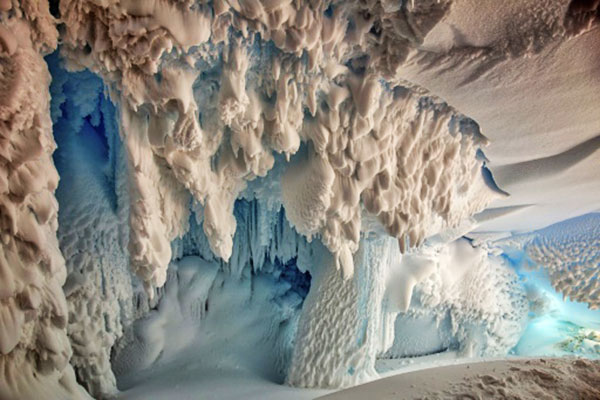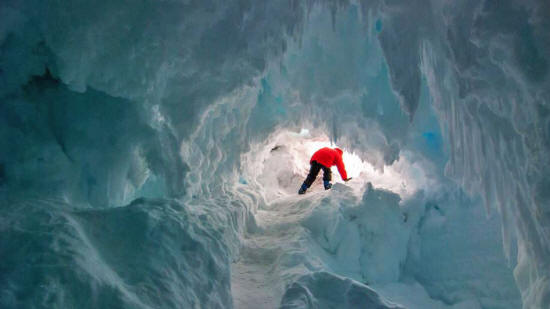|

by Ivan Petricevic
09 September
2017
from
Ancient-Code Website
Spanish similar
information

Experts indicate
how more than 15 volcanoes in Antarctica
that were either known to be currently active
or show evidence of recent activity.
The newly found cave systems
on Antarctica may be home to unknown
life forms, as the caves are warm enough to support plant and
animals yet to be identified by experts.
Experts are very excited:
"Some of the DNA
evidence that we found implies that maybe there are things
living in these caves that we know nothing about. There could
even be new species."
Researchers exploring
Antarctica have made a shocking discovery as they've stumbled across
extensive cave systems warmed by a nearby volcano.

Furthermore,
forensic analysis of soil samples
from these caves have revealed intriguing DNA traces of algae,
mosses, and small animals:
"It can be
extremely hot inside the caves - even up to 25 degrees Celsius
in some caves.
"You could wear
a T-shirt in there and be pretty comfortable," said lead
researcher Ceridwen Fraser from the Australian National
University.
"There's light
near the cave mouths, and light filters deeper into some caves
where the overlying ice is thin."
Ceridwen Fraser
explained that most of the DNA found in the caves near or beneath
Mount Erebus was similar to DNA of plants and animals including
mosses, algae, and invertebrates found elsewhere in Antarctica, but
not all sequences could be completely identified, which means that
scientists may have stumbled across completely unknown species.
The cave system is
believed to have formed after of steam traveling through their
passages.

Some of the DNA resembled known species.
Image
Credit: MICHAEL S BECKER
"The results of this study give us a tempting preview of what
could live under the ice in Antarctica, there might even be new
species of animals and plants," he added.
However, Professor
Laurie Connell, a co-investigator at the University of Maine,
believes that these intriguing traces of DNA do not conclusively
prove that plants and animals are living in the caves.
"The next steps will
be to take a closer look at the caves and the search for living
organisms. If they do exist, it opens the door to a new exciting
world," she said.
Another co-investigator,
Craig Cary of the University of Waikato in New Zealand,
recalled that previous research had found that various bacterial and
fungal communities lived in Antarctica's volcanic caves.
Researchers also point out that it is not known how many cave
systems exist around Antarctica's volcanoes, or how interconnected
they are as these sub glacial environments may be difficult to
identify, reach or explore.
The study 'Evidence of Plant and Animal Communities at
Exposed and Subglacial (Cave) Geothermal sites in Antarctica', was published in the international journal Polar Biology.
|




